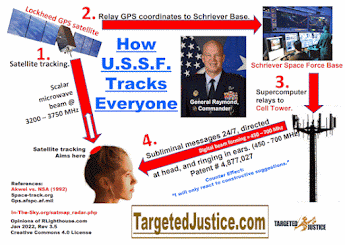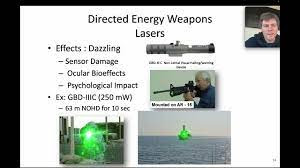Patent No. 4889526 Non-invasive method and apparatus for modulating brain signals through an external magnetic or electric field to reduce pain
Patent No. 4889526
Non-invasive method and apparatus for modulating brain signals through an external magnetic or electric field to reduce pain (Rauscher, et al., Dec 26, 1989)
Abstract
This invention incorporates the discovery of new principles which utilize magnetic and electric fields generated by time varying square wave currents of precise repetition, width, shape and magnitude to move through coils and cutaneously applied conductive electrodes in order to stimulate the nervous system and reduce pain in humans. Timer means, adjustment means, and means to deliver current to the coils and conductive electrodes are described, as well as a theoretical model of the process. The invention incorporates the concept of two cyclic expanding an collapsing magnetic fields which generate precise wave forms in conjunction with each other to create a beat frequency which in turn causes the ion flow in the nervous system of the human body to be efficiency moved along the nerve path where the locus of the pain exists to thereby reduce the pain. The wave forms are create either in one or more coils, one or more pairs of electrodes, or a combination of the two.
Notes:
BACKGROUND
OF THE INVENTION
1. Field of the Invention
This invention relates to an electronic apparatus which is capable of generating
a magnetic field that is precisely tuned in order to interact with the brain
and the heart in order to pace the heart and also to interact with the nervous
system in order to counteract pain.
2. Description of the Prior Art
Arrhythmias and other cardiac problems are associated with abnormal pulse rates.
Abnormal heart rates are usually associated with heart blocks. Severe heart
blocks are treated with artificial pacemakers while incomplete or partial heart
blocks are usually treated with drugs or they are just tolerated.
Artificial pacemakers include devices for timing electric impulses delivered
to the heart through electrodes that are implanted in the heart. The timing
device and the electrical impulses to the heart require a power source. In almost
all of these pacemakers the electrodes as well as the timing means and the batteries
are all surgically implanted beneath the skin of the patient. Because of this,
even if the device malfunctions or if the batteries become spent, surgery is
required to repair it.
Known artificial pacemakers stimulate the heart muscle directly with electric
impulses that cause heartbeats. The impulses are provided at intervals that
correspond to the heart muscle contraction rate. Artificial pacemakers of this
category are wanting in several respects, among which are the discomfort and
expense of surgery, that they put the user at risk to uncontrollable circumstances
such as batteries exploding internally, malfunctions of the electronic impulses
due to transmission sources such as microwave ovens and airport security devices
and malfunctions due to faulty insulation in the lead wires. An implanted artificial
pacemaker could also preclude some users from undergoing magnetic resonance
imaging (NMR) as a diagnostic tool. Because of the very large fields and scan
rate of NMR devices, they can interact with and affect the function of an internal
artificial pacemaker, and conversely, an internal artificial pacemaker can distort
the NMR data.
No prior art devices to counteract pains through appropriate magnetic signals
are presently known in the prior art.
SUMMARY
OF THE PRESENT INVENTION
The inventors have discovered that the beginning of the normal cardiac cycle
and response to pain cycle originates in the mid brain and the hypothalamus
with excitation of the Purkinje cells and is oscillatorily propagated to the
heart or source of pain, respectively. In dealing with the heart, the SA node
in the heart is the site of the electric excitation impulse which directly produces
the contraction of the cardiac musculature. The electric excitation is propagated
within the heart by specialized conductive tissues which include in addition
to the sinoauricular node, the AV node, the bundle of His with right and left
branches, the Purkinje cells and fibers.
One embodiment of this invention is an external, magnetic field generating device
that regulates cardiac rhythm and character as well as a process for employing
the device. The device may be worn near the heart, for example suspended from
the neck or worn in the pocket of a user. It may be used only when needed, and
it may be externally regulated. The device also is effective to regulate cardiac
activity when worn near the occiput.
The device may be repaired or have its batteries or other energy sources changed
without surgery and, particularly for persons with only partial blocks, the
device of this invention may be worn only when the rhythm or character of the
heart must be adjusted. The device of this invention is not affected by extraneous
emissions from electronic devices.
The device of this invention includes means to produce an expanding and collapsing
magnetic field the shape of which, when plotted against time, is in the form
of a square wave. For an adult human the frequency is from about 7.15 to about
7.78 Hertz. The magnetic field produced by the device has a minimum strength
at its poles of about 0.5 gauss. The square wave magnetic field must have a
duty cycle of between 15% and 65%. The maximum strength of the magnetic field
is limited only to avoid affecting others in the vicinity of the person wearing
the device; it is not limited to any maximum value functionally. Affecting others
can also be avoided by providing magnetic shielding or patterning the field
with two or more coils so that the fields are directed toward the heart. Such
shielding is available in the form of Mumetal, a trademark alloy having high
magnetic permeability and low hysteresis and comprising iron, nickel, copper,
chromium and manganese.
The term "square wave" is used herein as it is understood in the art, namely,
a wave that is essentially in the form of an abrupt rise in value from a zero
level followed by a period maintained at some maximum value followed by an abrupt
decrease in value to the zero level. When plotting value against time, variations
in the value produces a wave form made essentially of vertical and horizontal
lines. Departures from absolutely vertical and horizontal lines through all
portions of the wave are acceptable as long as the wave form of the magnetic
field has an essentially square or rectangular form as understood by those skilled
in the art.
An expanding and collapsing magnetic field at a frequency between 7.15 and 7.78
Hertz, preferably 7.6 Hertz, in the form of a square wave with a duty cycle
between 15% and 65% will trigger responses in a human cardiac control system
that cause a normal PQRSTU wave form in an electrocardiogram trace. The PQRSTU
wave is the characteristic form of an electro-cardiogram trace and is referred
to as a PQRSTU curve by those skilled in the art. It will be discussed in greater
detail herein. Additionally, the magnetic square wave in the above mentioned
frequency range will trigger those responses regularly and at normal intervals.
In the device of this invention there is no need to produce a magnetic field
wave form in the shape of a normal PQRSTU wave nor is there any need to pulse
the square wave impulses in a sequence that duplicates the pulse rate of the
person being treated. Rather, it has been found that continuous exposure to
the square wave magnetic field having a frequency between 7.15 and 7.78 Hertz
causes the human user's heart to beat in a normal PQRSTU wave and at normal
intervals.
The frequency of the square wave magnetic impulses of 7.15 through 7.78 Hertz
is effective for adult human beings. These frequencies may be varied for different
mammals or for humans with large or small hearts and with characteristically
different heart rates. The frequency should be about 6.18 times the normal pulse
(in seconds of the user).
In the second embodiment of the present invention designed to treat pain, the
magnetic field impulses generated by the device will be at two frequencies differing
from each other by a factor of about ten. The frequencies are mixed to counteract
pain. For an adult, a frequency of about 76 Hertz is superimposed on a square
wave field having a pacemaking frequency of about 7.6 Hertz. The higher frequency
impulses are only used during the duty portion of the lower frequency impulses.
In addition, the higher frequency impulses have been found to cause a malfunctioning
heart to stabilize to a normal heart rate more rapidly than if the lower frequency
impulses are used alone.
The magnetic field impulses generated by the devices of the present invention
do not completely override the normal physiologic mechanisms, but rather augment
them. Under physical stress the pulse rate of one using this device will increase
and while sleeping, the pulse rate will decrease, even though the device operates
at a constant frequency. In general, when the device operates at lower frequencies,
in the range from about 7.2 and 7.5 Hertz, it will cause a user to have a faster
heart rate and when the device operates at higher frequencies, it will cause
a user to have a slower heart rate.
The inventors have discovered that an expanding and collapsing magnetic field
of precise shape and form influences the Purkinje cells and cardiovascular hemodynamics.
One cluster of Purkinje cells is found in the AV node of the cardiac muscle
and another in the cerebellum at the hypothalamic-pituitary axis. These regions
of the body are known to be involved with pacing the human heart. However, until
use of one embodiment of the device of the present invention, it was not known
the Purkinje cells are apparently influenced by magnetic impulses of the character
described herein. However, whether Purkinje cells or cardiovascular hemodynamics
are involved in the operation of the device of this invention, it has been found,
as will be demonstrated, that this invention is effective to regulate the pace
and character of cardiac activity.
The device described herein reinforces this electrical activation and conduction
system because by the time the impulses from the device reach the cardiac muscle,
their frequencies match very well with the known propagation rate of the aforementioned
excitable tissues. Thereafter, the imposed magnetic impulses reinforce and normalize
the electrical conduction system.






Comments